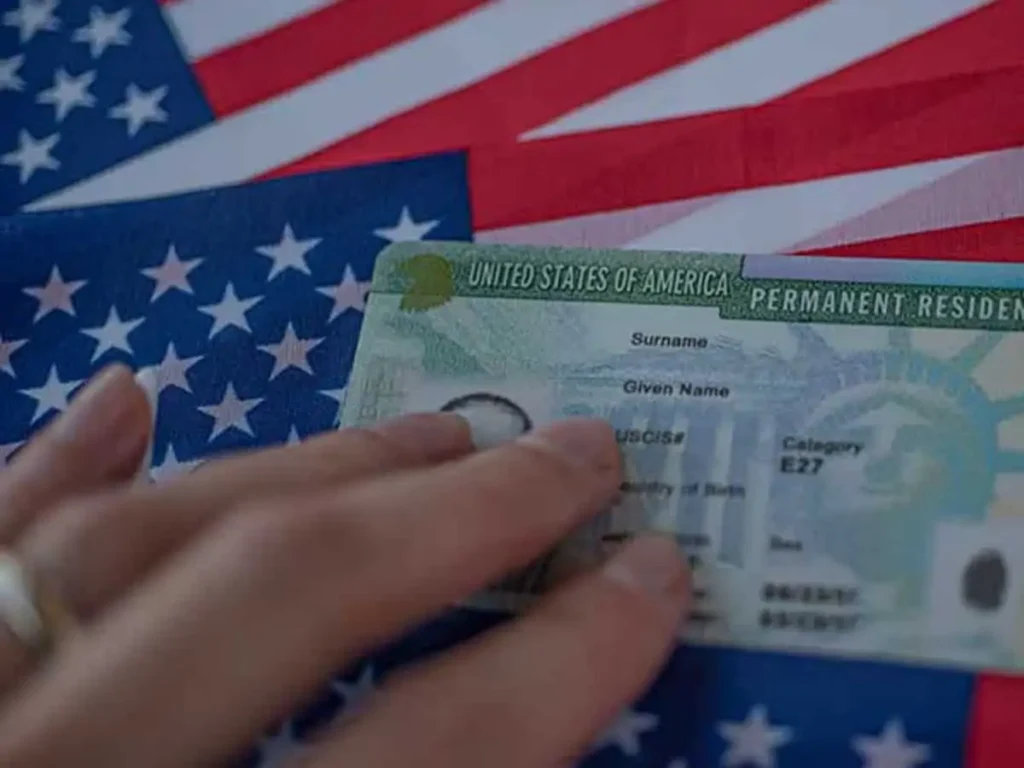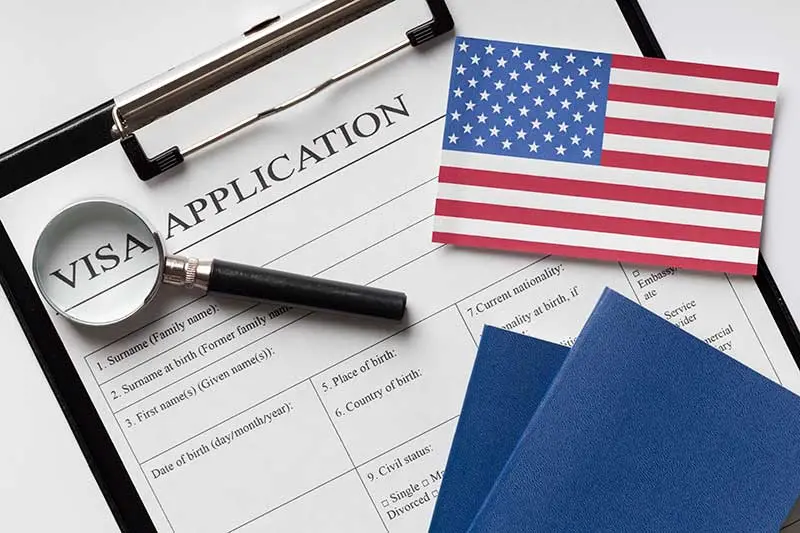Imagine launching your tech startup and tapping into the vast potential of the U.S. market, only to be met with the complex maze of immigration laws. For many international entrepreneurs, navigating US immigration for tech startups is a daunting yet crucial step towards achieving their American dream. At Cortes Immigration Law Firm, we understand the challenges and aspirations of tech innovators like you, and we’re here to help you turn your vision into reality.
The United States has long been a beacon for tech entrepreneurs seeking to innovate and grow their businesses. However, the intricate U.S. immigration system can pose significant hurdles. From securing the right visa to ensuring compliance with ever-changing regulations, the path to establishing your startup in the U.S. requires expert guidance. This is where our expertise at Cortes Immigration Law Firm comes into play, providing tailored solutions to help you navigate these complexities.
In this comprehensive guide, we will explore the essential aspects of US immigration for tech startups. We’ll delve into various visa options available for tech entrepreneurs, including the H-1B, O-1, and E-2 visas, and discuss the eligibility criteria and application processes. Additionally, we’ll highlight the benefits and potential pitfalls of each option, offering practical advice to help you make informed decisions.
Whether you’re an established tech professional looking to expand your operations or an emerging startup founder aiming to break into the U.S. market, this guide will provide you with the insights and tools needed to succeed. Stay tuned as we unravel the complexities of U.S. immigration and set you on the path to achieving your entrepreneurial goals in the land of opportunity.
Understanding US Immigration Options for Tech Startups
For tech startup founders aiming to establish their businesses in the United States, navigating the complex landscape of immigration options can be daunting. However, understanding the various visa categories available can significantly ease this process. This section provides an in-depth overview of key immigration pathways suitable for tech entrepreneurs, including the H-1B, O-1A, E-2, and EB-5 visas.
Each visa category has unique requirements and benefits, making it essential for startup founders to choose the option that best aligns with their business goals and personal circumstances. Below, we explore these visa options in detail, offering insights into their relevance and application processes for tech startups.
H-1B Visa: Specialty Occupations
The H-1B visa is one of the most popular options for tech startups looking to hire highly skilled foreign workers. This nonimmigrant visa allows U.S. companies to employ foreign workers in specialty occupations that require theoretical and practical application of specialized knowledge.
To qualify for an H-1B visa, the candidate must hold at least a bachelor’s degree or its equivalent in a specific field related to the job. The U.S. Citizenship and Immigration Services (USCIS) has an annual cap of 85,000 new H-1B visas, making the application process highly competitive. Despite this, many tech companies successfully hire STEM professionals, such as software developers and data scientists, through the H-1B program.
O-1A Visa: Extraordinary Ability
The O-1A visa is designed for individuals with extraordinary ability in the sciences, arts, education, business, or athletics. This visa is particularly suitable for tech startup founders who have demonstrated exceptional achievements and recognition in their field.
To qualify for an O-1A visa, applicants must provide evidence of their extraordinary ability, such as major awards, publications, or significant contributions to the tech industry. Unlike the H-1B visa, the O-1A visa does not have a cap, and it offers unlimited extensions, making it an attractive option for highly accomplished tech entrepreneurs.
E-2 Visa: Treaty Investor
The E-2 visa is available to nationals of countries that have a commerce treaty with the United States. This visa allows tech startup founders to invest a substantial amount of capital in a U.S. business and actively manage its operations.
To qualify for an E-2 visa, the entrepreneur must own at least 50% of the business and demonstrate that the investment is substantial and not marginal. The E-2 visa offers initial approval for up to two years, with unlimited two-year extensions, making it a flexible option for tech startups looking to establish a long-term presence in the U.S.
EB-5 Visa: Immigrant Investor
The EB-5 visa, also known as the Immigrant Investor Program, provides a pathway to permanent residency for tech entrepreneurs who make a qualifying investment in a U.S. business. This visa requires an investment of $1.05 million, or $800,000 if the investment is in a Targeted Employment Area, and the creation of at least 10 jobs for U.S. workers.
The EB-5 visa is an excellent option for tech startups seeking significant funding while also obtaining permanent residency for the entrepreneur and their family. This visa not only supports business growth but also offers a direct path to U.S. citizenship.
Choosing the Right Visa for Your Tech Startup
Selecting the most suitable visa for your tech startup depends on various factors, including your nationality, level of investment, and long-term business goals. Here are some key considerations to help you make an informed decision:
- Business Structure and Investment Capital: Evaluate your startup’s structure and financial capacity. The E-2 visa requires a substantial investment, while the EB-5 visa is suitable for larger, job-creating investments.
- Credentials and Achievements: Assess your professional accomplishments. The O-1A visa is ideal for individuals with extraordinary ability, while the H-1B visa is more accessible for those with specialized skills and education.
- Long-Term Goals: Consider your long-term residency plans. The EB-5 visa offers a direct path to permanent residency and citizenship, while the H-1B and O-1A visas provide temporary work authorization with potential for extension.
By understanding the unique requirements and benefits of each visa category, tech startup founders can strategically plan their immigration journey to the United States. For personalized legal advice and assistance with your visa application, consider consulting with an expert immigration attorney at Cortes Immigration Law Firm.
Navigating the Application Process
Embarking on the journey of US immigration for tech startups involves navigating a multifaceted application process. Understanding the steps involved can significantly ease this journey, ensuring you meet all requirements and deadlines. This section provides a comprehensive roadmap for tech startup founders, from initial research to submission and follow-up.
By breaking down the application process into manageable steps, you can avoid common pitfalls and streamline your path to securing the appropriate visa. Whether you are applying for an H-1B, O-1A, E-2, or EB-5 visa, this guide will help you understand the critical milestones and timelines involved.
Step 1: Initial Research and Preparation
The first step in navigating the application process is conducting thorough research. Begin by identifying the most suitable visa category for your tech startup. Consider factors such as your business goals, investment capacity, and professional achievements. For instance, if you have demonstrated extraordinary ability in your field, the O-1A visa might be the best fit.
Once you have identified the appropriate visa, gather all necessary documentation. This may include educational certificates, proof of investment, evidence of extraordinary achievements, and other relevant documents. Organizing your paperwork early can save time and prevent delays later in the process.
Step 2: Engaging Legal Assistance
Engaging an experienced immigration attorney is crucial to navigating the complex US immigration system. An attorney can provide personalized advice, help you understand the specific requirements of your chosen visa category, and assist in preparing your application. At Cortes Immigration Law Firm, we specialize in guiding tech startup founders through the intricacies of the visa application process.
Legal assistance can also help you avoid common mistakes that could jeopardize your application. For example, an attorney can ensure that all forms are correctly filled out and submitted on time, and that you provide sufficient evidence to support your application.
Step 3: Preparing and Submitting the Application
With your documentation in order and legal assistance secured, the next step is to prepare and submit your visa application. This involves completing the necessary forms, paying the required fees, and submitting your application to the US Citizenship and Immigration Services (USCIS).
It is essential to follow the instructions provided by USCIS carefully. Any errors or omissions can result in delays or even denial of your application. Double-check all information before submission and ensure that you meet all deadlines.
Step 4: Attending Interviews and Providing Additional Information
After submitting your application, you may be required to attend an interview at a US consulate or embassy. This is an opportunity for you to provide additional information and clarify any aspects of your application. Be prepared to discuss your business plans, investment details, and professional achievements.
In some cases, USCIS may request additional documentation or information. Respond promptly to any such requests to avoid delays in processing your application.
Step 5: Monitoring Application Status and Following Up
Once your application is submitted, it is important to monitor its status regularly. USCIS provides online tools that allow you to track the progress of your application. Staying informed about your application status can help you address any issues promptly.
If your application is approved, you will receive instructions on how to proceed with obtaining your visa. If your application is denied, an attorney can help you understand the reasons for the denial and explore options for appeal or reapplication.
Tips for Avoiding Common Mistakes and Delays
To ensure a smooth application process, consider the following tips:
- Start Early: Begin the application process well in advance to account for any unexpected delays.
- Stay Organized: Keep all your documents organized and easily accessible.
- Seek Professional Help: Engage an experienced immigration attorney to guide you through the process.
- Follow Instructions: Carefully follow all instructions provided by USCIS.
- Be Responsive: Respond promptly to any requests for additional information or documentation.
By following these tips and understanding the steps involved, tech startup founders can navigate the US immigration application process with confidence. For personalized legal advice and assistance with your visa application, consider consulting with an expert immigration attorney at Cortes Immigration Law Firm.
Overcoming Common Challenges
Establishing a tech startup in the United States is an exciting venture, but it comes with its fair share of challenges. Navigating the US immigration system can be particularly daunting for tech entrepreneurs. This section identifies common challenges faced by tech startup founders during the immigration process and provides practical solutions to overcome these hurdles.
By addressing these challenges head-on, tech entrepreneurs can streamline their immigration journey and focus on growing their businesses. Below, we explore some of the most prevalent obstacles and offer actionable advice to help you succeed.
Challenge 1: Understanding Complex Visa Requirements
One of the primary challenges tech startup founders face is understanding the complex visa requirements. Each visa category, such as H-1B, O-1A, E-2, and EB-5, has unique criteria and documentation needs.
For example, the H-1B visa requires a bachelor’s degree or equivalent in a specific field, while the O-1A visa demands evidence of extraordinary ability. The E-2 visa necessitates a substantial investment, and the EB-5 visa requires a significant financial commitment and job creation.
Solution: Conduct thorough research on each visa category to determine the best fit for your startup. Consulting with an experienced immigration attorney can provide personalized guidance and ensure you meet all requirements. At Cortes Immigration Law Firm, we specialize in helping tech entrepreneurs navigate these complexities.
Challenge 2: Gathering and Organizing Documentation
Another common challenge is gathering and organizing the necessary documentation. Visa applications often require extensive paperwork, including educational certificates, proof of investment, and evidence of professional achievements.
For instance, the O-1A visa application may require documentation of awards, publications, or significant contributions to the tech industry. The EB-5 visa demands proof of investment funds and job creation plans.
Solution: Start early and create a checklist of required documents for your chosen visa category. Keep all documents organized and easily accessible. Engaging an immigration attorney can help ensure you provide comprehensive and accurate documentation.
Challenge 3: Meeting Application Deadlines
Meeting application deadlines is crucial for a successful immigration process. Missing deadlines can result in delays or even denial of your visa application. Each visa category has specific timelines and submission requirements.
For example, the H-1B visa has an annual cap and a limited application window, making timely submission essential. The E-2 and EB-5 visas also have specific deadlines for investment and job creation milestones.
Solution: Create a detailed timeline for your visa application process, including all critical deadlines. Set reminders and allocate sufficient time for each step. An immigration attorney can help you stay on track and ensure timely submission of your application.
Challenge 4: Navigating Interviews and Requests for Additional Information
After submitting your application, you may be required to attend an interview or provide additional information. This can be a stressful part of the process, as it requires thorough preparation and prompt responses.
For example, the O-1A visa interview may involve discussing your professional achievements and future plans. The EB-5 visa process may require additional documentation to verify investment funds and job creation.
Solution: Prepare thoroughly for interviews by reviewing your application and practicing your responses. Be ready to provide additional information promptly if requested. An immigration attorney can help you prepare for interviews and respond to requests effectively.
Challenge 5: Adapting to Cultural and Business Differences
Adapting to cultural and business differences in the United States can be challenging for tech startup founders. Understanding local business practices, legal requirements, and cultural norms is essential for successful integration.
For example, business communication styles, negotiation tactics, and regulatory compliance may differ significantly from your home country. Adapting to these differences is crucial for building successful partnerships and growing your startup.
Solution: Invest time in learning about US business culture and legal requirements. Attend networking events, join professional associations, and seek mentorship from experienced entrepreneurs. Consulting with an immigration attorney can also provide valuable insights into navigating cultural and business differences.
Real-Life Success Stories
Many tech entrepreneurs have successfully navigated these challenges and established thriving startups in the United States. For instance, Elon Musk, the founder of Tesla and SpaceX, overcame numerous immigration hurdles to achieve his entrepreneurial dreams.
Another example is Sundar Pichai, CEO of Google, who navigated the immigration process and rose to the top of one of the world’s leading tech companies. These success stories highlight the importance of perseverance, preparation, and seeking expert guidance.
By learning from these examples and implementing the solutions provided, tech startup founders can overcome common challenges and achieve their goals in the United States. For personalized legal advice and assistance with your visa application, consider consulting with an expert immigration attorney at Cortes Immigration Law Firm.
For more information on US immigration options for tech startups, explore our other sections on Cortes Immigration Law Firm.
Leveraging Professional Support
Embarking on the journey of US immigration for tech startups can be a complex and daunting process. Leveraging professional support from experienced immigration lawyers and consultants can significantly ease this journey, ensuring that tech startup founders navigate the intricacies of the immigration system effectively. This section highlights the importance of seeking professional support and provides insights into how these experts can help tech entrepreneurs achieve their goals.
Immigration professionals bring a wealth of knowledge and experience to the table, offering personalized advice tailored to the unique needs of tech startups. By engaging the services of an immigration attorney, tech entrepreneurs can avoid common pitfalls, ensure compliance with legal requirements, and increase their chances of a successful visa application.
The Role of Immigration Attorneys
Immigration attorneys play a crucial role in guiding tech startup founders through the US immigration process. They provide expert advice on the most suitable visa categories, help prepare and submit applications, and represent clients in case of legal challenges. Here are some key benefits of working with an immigration attorney:
- Expert Guidance: Immigration attorneys have in-depth knowledge of US immigration laws and regulations. They can help you understand the specific requirements of each visa category and advise on the best options for your startup.
- Document Preparation: Preparing a visa application involves gathering extensive documentation, including proof of investment, educational certificates, and evidence of professional achievements. An attorney can help you organize and present your documents effectively.
- Application Submission: Immigration attorneys ensure that your application is complete and accurately filled out, reducing the risk of delays or denials due to errors or omissions.
- Legal Representation: If your application faces challenges or is denied, an immigration attorney can represent you in appeals or legal proceedings, increasing your chances of a favorable outcome.
Choosing the Right Immigration Professional
Selecting the right immigration lawyer or consultant is crucial for the success of your visa application. Here are some tips to help you choose the best professional support for your needs:
- Experience and Expertise: Look for attorneys with extensive experience in handling immigration cases for tech startups. Check their track record and client testimonials to gauge their expertise.
- Specialization: Choose a lawyer who specializes in the visa categories relevant to your startup, such as H-1B, O-1A, E-2, or EB-5 visas.
- Communication: Effective communication is essential for a smooth immigration process. Ensure that the attorney is responsive and provides clear, concise information.
- Reputation: Research the attorney’s reputation within the industry. Look for reviews, ratings, and recommendations from other tech entrepreneurs.
- Cost: Understand the attorney’s fee structure and ensure that it aligns with your budget. While cost is an important factor, prioritize quality and expertise over the lowest price.
Success Stories: Tech Entrepreneurs Who Benefited from Professional Support
Many tech entrepreneurs have successfully navigated the US immigration process with the help of professional support. Here are a few real-life success stories:
Elon Musk: The founder of Tesla and SpaceX, Elon Musk, overcame numerous immigration hurdles with the help of experienced attorneys. His journey highlights the importance of professional support in achieving entrepreneurial success in the US.
Sundar Pichai: The CEO of Google, Sundar Pichai, navigated the complex immigration process with the assistance of legal experts. His story underscores the value of expert guidance in securing a successful career in the US tech industry.
These success stories demonstrate that with the right professional support, tech startup founders can overcome immigration challenges and achieve their goals in the United States.
Conclusion: The Value of Professional Support
Leveraging professional support is essential for tech startup founders navigating the US immigration system. Immigration attorneys and consultants provide invaluable expertise, helping entrepreneurs understand visa requirements, prepare comprehensive applications, and address legal challenges. By choosing the right professional support, tech entrepreneurs can streamline their immigration journey and focus on growing their businesses in the United States.
For personalized legal advice and assistance with your visa application, consider consulting with an expert immigration attorney at Cortes Immigration Law Firm. Our team specializes in guiding tech startup founders through the complexities of the US immigration process, ensuring a smooth and successful journey.
Achieving Immigration Success for Tech Startups
As you embark on the journey of establishing your tech startup in the United States, understanding the intricacies of the US immigration system is crucial. From selecting the right visa to navigating the application process, each step requires careful consideration and expert guidance. By leveraging the insights shared in this guide, you can confidently steer your startup towards success.
First and foremost, it’s essential to familiarize yourself with the various visa options available for tech entrepreneurs. Whether it’s the H-1B visa for specialty occupations, the O-1A visa for individuals with extraordinary ability, the E-2 visa for treaty investors, or the EB-5 visa for immigrant investors, each pathway offers unique benefits and requirements. By evaluating your business goals, investment capacity, and professional achievements, you can select the visa that best aligns with your startup’s needs.
Navigating the application process can be daunting, but breaking it down into manageable steps can make it more approachable. Start with thorough research and preparation, engage legal assistance from experienced immigration attorneys, and ensure your application is meticulously organized and submitted on time. Remember, attention to detail and adherence to deadlines are critical to avoid common pitfalls and delays.
Overcoming challenges such as understanding complex visa requirements, gathering and organizing documentation, and meeting application deadlines is part of the process. By addressing these obstacles head-on and seeking professional support, you can streamline your immigration journey and focus on growing your business. Real-life success stories of tech entrepreneurs like Elon Musk and Sundar Pichai highlight the importance of perseverance and expert guidance in achieving your American dream.
Here are some key takeaways:
- Understand Visa Options: Evaluate the H-1B, O-1A, E-2, and EB-5 visas to determine the best fit for your startup.
- Prepare Thoroughly: Conduct detailed research, gather necessary documentation, and engage legal assistance early in the process.
- Meet Deadlines: Create a timeline, set reminders, and ensure timely submission of your application.
- Seek Professional Support: Consult with experienced immigration attorneys to navigate complexities and increase your chances of success.
At Cortes Immigration Law Firm, we are dedicated to helping tech startup founders achieve their immigration goals. Our team of experts is here to provide personalized legal advice and support every step of the way. Contact us today to schedule a consultation and explore your immigration options further. Visit our website at Cortes Immigration Law Firm for more information and resources.
Ready to take the next step? Share your thoughts or questions in the comments below, and don’t forget to share this guide with your network using the hashtag #TechStartupImmigrationSuccess.










